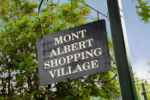Author's Note
The present-day districts of Surrey Hills,
Mont Albert, Box Hill and Canterbury were the locations for several experimental shortwave radio transmissions in
the 1920s. These stories may interest readers!
First
Two-way shortwave contact with England
It is not commonly known, but it is claimed that the first two-way amateur
shortwave radio contact between Australia and England was on November
14, 1924.
This was from the experimental station "3BQ", operated by Mr Max
Howden, at his residence in Surrey Hills, at 18 Blackburn St, just a few
streets away from the author's home!
The story appeared in the Box Hill "Reporter" newspaper of November
21 1924.
The achievement was also reported in the Melbourne
"Argus", November 26, 1924, and the original article can be viewed or
downloaded from the National Library of Australia archives, http://nla.gov.au/nla.news-article2074976.
The
house is long gone, and apartments now occupy the site.
The year of 1924 was also marked by innumerable experimental SW
two-way long-distance transmissions from amateurs in Australia.
This is the actual article, with the original text "cleaned up" by
this author, but grammar has not been changed!
WIRELESS TO ENGLAND
Amateur's Apparatus
Described
Melbourne Argus - November 26 1924
A description of the transmitting and receiving apparatus used
at
his experimental wireless station at Box Hill during recent wireless
tests to England was given by Mr T W M Howden at a meeting of the Wireless
Institute at Anzac House in Melbourne last night. At the dinner, which
will now in future precede all general meetings of the Institute, Mr Howden was
presented with a pair of wireless headphones in recognition of his performance.
Mr Howden said that a feature
of the apparatus used in the
communication with England was that, compared to the appliances generally used
for long-distance wireless transmission, it was extremely simple, and the
receiving apparatus was of an inexpensive nature The power used at the
transmitter varied between 100 and 150 watts and the current in the aerial from
0.9 of an amp to 1.4 amperes A single valve, having a rated input of 250 watts,
was used in the transmitter and this was operated with a pressure of about 2000
volts.
Power to work the station was
obtained from the electric light
mains, and the pressure was raised to about 2000 volts by a suitable
transformer The alternating current delivered by the transformer was converted
into a direct current by being passed through a chemical rectifying device
consisting of 101 jars A standard type of amateur transmitter, which had
previously been used for low power transmission, was employed.
The aerial used was about
75ft high, and consisted of a small flat top ' T * aerial operated in
conjunction with the ' T" type counterpoise which was used instead of an
earth connection.
To obtain satisfactory
operation on the short wave lengths used it was necessary to make the aerial as
small as was consistent with the maximum possible height and the counterpoise
was also made as small as would give satisfactory tuning in conjunction with
the aerial.
In this manner no trouble had
been experienced in maintaining a steady wave of 88 metres.
The receiver used was in
principle one of the first and most generally used types of valve circuits.
Only two valves were used, and the receiver contained no radio frequency
amplifier.
In designing the tuners for
the receiver, special precautions were taken to prevent any loss of the
received energy, and in this manner it had been possible to receive American
amateurs with the aerial disconnected from the receiving apparatus.
The
Work of Sydney Newman
Sydney Newman was an engineer with AWA and in 1921 he
established an amateur wireless station at his home in Mont Albert Rd,
Canterbury, not far from the author's home.
From this suburban location, Newman ran many broadcasts over his wireless
station VK3ME, sometimes under his own initiative and sometimes as part of his
work with AWA.
In
1927, Sydney Newman built a shortwave transmitter which was installed with the
mediumwave station 3LO in Braybrook and the callsign was transferred from Newman's
home to the new location. Extensive Morse Code tests were conducted over
this new transmitter in preparation for launching a new shortwave broadcasting
service.

